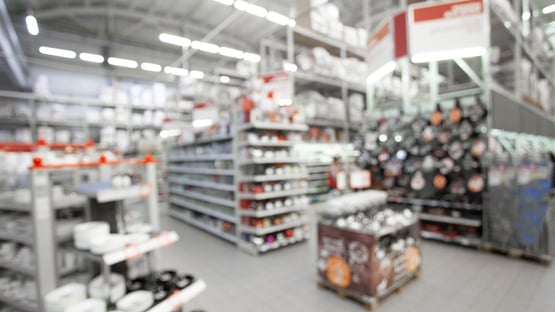Retailers are facing up to some of their most intractable problems, both for the customer and the balance sheet, using technology at the shelf edge.
Retailers have never faced quite so many challenges; inflation combined with unpredictable shopping behaviours that emerged during the Covid pandemic are stressing the entire product lifecycle – buying, allocation, ranging, assortment, replenishment and markdowns – and eating into margins.
And all with implications for in-store processes and labour productivity, even as wages continue to rise. Part of the answer comes from Scandinavia, where electronic shelf labels (ESLs) have been widely adopted to tackle the high cost of labour, a reality that retailers in the UK are now having to face. This matters more than ever because of the shortage of labour – a problem that currently sees no end – and the fact that retaining staff that are available is getting tougher.
Retailers are having to respond to a changeable, unpredictable and competitive shopping landscape by managing price changes, promotions and markdowns more frequently; doing this manually is expensive, time-consuming and often fraught with errors. Changing prices by hand in stores that use only paper labels is also a distraction from other often more urgent tasks.
The impact of managing prices on paper doesn’t stop there. Incorrect prices can lead to fines, but of even greater concern to many retailers is the effect on customer loyalty. This is about prices as well as information about products at the shelf edge and online. In Pricer’s own research, 71% of shoppers said cross-channel pricing inconsistency frustrates them and 60% would shop less with retailers who have inconsistent pricing on- and off-line. 70% would become less loyal to retailers who didn’t have pricing matched across on-and off-line channels.
These findings reflect a truth about the modern consumer – they are wise to how retail works and are far less tolerant of anything they regard as unfair or inconvenient.
Paper labels and their inflexibility are really the tip of an iceberg given that consumers want not just price but product information. In the same research, 57% of consumers said they would like to have more access to product information in addition to pricing at the shelf edge, while a further 57% also said they would like to see sourcing / ingredients information at the shelf edge.
45% have been put off buying a complex or considered purchase as there hasn’t been enough product information available in the aisle, while 49% would like more digital signage or information at the shelf edge to help inform their buying decision.
Electronic labels, a well-established technology, have found even greater relevance in this new world. The value of electronic shelf labels is principally to do with time saved not having to print and replace price tags. Based on 1,000 price changes per week and two minutes to change each price tag (including printing, sorting and finding the right product) at an hourly cost of £14.00, including additional employer costs, that totals more than £12,000 a year saved from price changes alone.
In addition, because prices can be changed instantly, in real time, they are always in step with the competition, whatever strategy they deploy, which is the best way to protect margins. Moreover, universal price management also guarantees consistency across both on- and off-line channels, which meets customer expectations, and avoids the risk of fines.
Data taken from ‘The Total Economic Impact of Pricer’, a commissioned study conducted by Forrester Consulting in November 2022, shows that Pricer delivers a five year ROI of 277%. In addition to the Return On Investment (ROI), Forrester’s research showed that deploying Pricer’s solution equates to a Net Present Value (NPV) of £85 million. It also found the solution effectively pays for itself in 18 months, highlighting Pricer’s ability to quickly deliver value to retail organisations.
From this platform of price integrity across channels comes the opportunity to fix a number of in store performance problems that are well-known but seemingly not easily solvable. At the top of the list is availability – once retailers know exactly what is and what is not on the shelf, they can then arm staff with the technology to measure that and connect to where stock actually is.
This means that shelf gaps can be filled more quickly resulting in higher sales and customers who no longer have to look elsewhere. This replenishment logic then extends to online retail, so that staff equipped with bar code scanners can fill orders quickly, helped further by flash technology that identifies the products they are looking for, which increases picking speed by at least 10% (see the customer story here).
Pricer and its partners have never fought shy of the fact that ESLs are a major investment and require rigorous management to implement.
While the initial investment in ESLs is high, the operational costs are realistic because Pricer’s ESLs use infrared technology to provide the tightest data security offer the fastest communication and longest battery life. This is important in increasingly network-heavy stores where overall performance is compromised.
Cheaper competitors will often make bold claims about the number of price changes that can be made, how long their batteries last and the effectiveness of their radio-based networks, but these are claims that have yet to be substantiated publicly. The truth is, Pricer labels have already demonstrated that they can happily manage 90,000 price changes an hour. And the retailer can also change prices during the day to enable Dynamic or Live Pricing.
Pricer is helping UK retailers confront this unique set of crises by building the business case to urgently adopt these technologies.
This article was originally published by ISN Magazine on Jan 30, 2023




